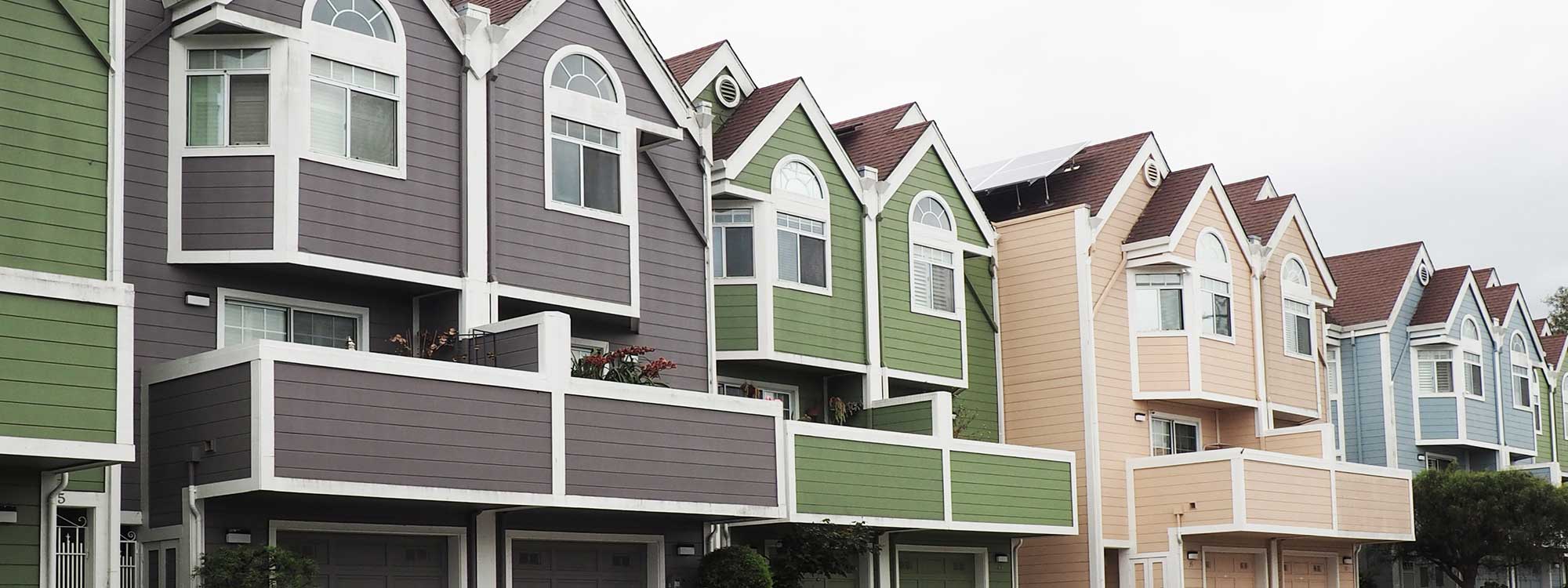This is a critical moment for California and the US to make pivotal progress on climate change by modernizing local policies to build more housing.
At the local level, a crucial process you may not have heard about is the Housing Element. Right now, every city in California is gearing up to update the Housing Element chapter of their General Plan, which establishes the vision for how each city and county will grow. This process ensures that communities adequately prepare for how they will meet one of the most basic needs of all Californians: housing, and it only happens every 8 years. The challenge of building enough housing to bridge the gap also brings opportunity for cities to incorporate climate policies into their Housing Element by building the right kind of housing in the right places while protecting open spaces.
Why Is the Housing Element so Important If You Care About the Climate?
The Housing Element has become increasingly important as the state—and especially the Bay Area—continues to face a major housing shortage. While this problem has many root causes, exclusionary zoning policies are a key barrier that the Housing Element update can help address. These restrictive policies force people to find homes they can afford outside of the areas in which they work and, consequently, drive up greenhouse gas emissions (GHG) that could be curbed with a shorter commute and accessibility to public transportation.
When we do not create enough homes at all income levels, prices go up, and working-class and low-income families are unable to afford to live in the communities they have resided in for generations. This continued upward pressure on the cost of housing means that Bay Area residents are finding it harder to afford to own a home. California is short over 3.5 million homes according to a report by the McKinsey Global Institute. In the Bay Area, the gap is almost half a million homes, according to the California Department of Housing and Community Development. The shortage and inaccessible prices force more workers to become super commuters—people who have to drive more than 90 minutes to get to work. The lack of affordable housing close to jobs also puts pressure for sprawl development in outlying areas meeting wildland vegetation where wildfire risk is more pronounced.
We need to build more transit-oriented development and create incentives for the public and private sectors to build affordable, infill housing with alternative forms of transportation and ample green infrastructure like bioswales, carbon-sequestering trees (that provide canopy cover and can mitigate the urban heat island effect), and native plants that can provide habitat and other nature-based solutions. Encouraging Climate SMART—Sustainable, Mixed, Affordable, Resilient, Transit-Oriented—Development can reduce travel time, travel costs, and the GHG emissions responsible for elevating the risks of climate change.
To achieve the growth our region needs while protecting open spaces, biodiversity, and current and future residents, Greenbelt Alliance recommends the following policies and priorities to guide the Housing Element process in alignment with our mission to educate, advocate, and collaborate to ensure the Bay Area’s lands and communities are resilient to a changing climate.
What We Would Like to See In Every Housing Element
Increase density within existing communities in non-high fire severity zones.
Why? We must build more housing in existing communities in order to create healthy, resilient, and affordable housing and protect our open spaces to provide climate benefits. Concentrating growth in places with low or even moderate wildfire hazard risk is necessary to address the need for building more homes while avoiding unnecessary pressure for sprawl. However, there are some places where wildfire risk is so significant that local governments simply should not be building new housing or job centers there.
How?
- Support growth in safe infill and dense locations including zoning for more housing in low-risk areas.
- Make the permitting process faster while allowing for a public process and reward jurisdictions that meet housing goals.
- Align public resources to support the preservation and production of affordable housing.
- Consider implementing a parking policy zoning reform to eliminate or reduce the number of parking spaces a developer is required to build, instead of making it market-driven.
- Invest in transit, transportation demand strategies, and electric charging stations as part of future development.
- Design public spaces, planned developments, and transportation systems to advance racial and social equity by co-developing processes with low-income and communities of color. It’s important to align with the community’s needs before designing the space.
Ensure fair and inclusive zoning policies that make housing accessible to everyone.
Why? The compounding crises of climate change and housing affordability disproportionately impact low-income and communities of color. Generations of racial disparities in wealth, exacerbated by federally backed lending practices that discriminate against communities of color, have resulted in many racially divided communities. By making single-family homes the only option for a neighborhood, racial diversity and density are significantly reduced. Increasing housing supply is a powerful tool to address housing affordability, segregation, and reduce greenhouse gas emissions.
In order to address our housing, climate, and equity crises, we need to change the stigma around multi-family home structures. Furthermore, current housing policies have resulted in people being unable to afford to live where they work, creating long unsustainable commutes—both for the environment and for our social fabric. Cities need to actively plan for diverse housing options that are accessible to people of all backgrounds and income levels using the principles of Fair Housing.
How?
- Increase growth in high-resource communities that are not prone to fire risk.
- Adjust zoning in wealthy communities to accommodate additional market-rate and affordable housing, not just put affordable housing in low-income neighborhoods.
- Reduce or eliminate single-family zoning and other exclusionary zoning to allow for more multifamily housing that is inclusive at all income levels.
- Prioritize people of low-income and communities of color in housing policies and outreach.
Require nature-based solutions for climate resilience in future developments.
Why? Natural disasters don’t discriminate. Communities all across the Bay Area are already feeling the acute impacts of climate change that lead to the devastating loss of homes, jobs, and tragically, at times, life. We need to make sure that current and future homes are resilient to climate risks like wildfire and flooding. Local jurisdictions must be better equipped to help communities struck by natural disasters rebuild and respond rapidly and inclusively. Housing should be built in a manner that protects current and future communities. Funding green infrastructure may seem like a higher investment, but the opportunity to fund it comes from new development. By encouraging developers to be ambitious and ensure that the community has an opportunity to provide input, new infill development has the opportunity to rejuvenate parts of a city that currently contribute negatively to GHG emissions, urban heat islands, and pose fire and flood risk.
How?
- Implement improvements to move or protect critical public assets threatened by sea-level rise or rising groundwater.
- Require and incentivize green infrastructure in future developments and, when possible, use green infrastructure as a preferred alternative.
- Consider permit streamlining for new housing that exceeds current green infrastructure requirements.
Would You Like to Get Involved in Housing Elements in Your City?
Go to https://www.fairhousingelements.org/ and sign up for the mailing list to get involved!
Photo: Marcus Lenk via Unsplash





